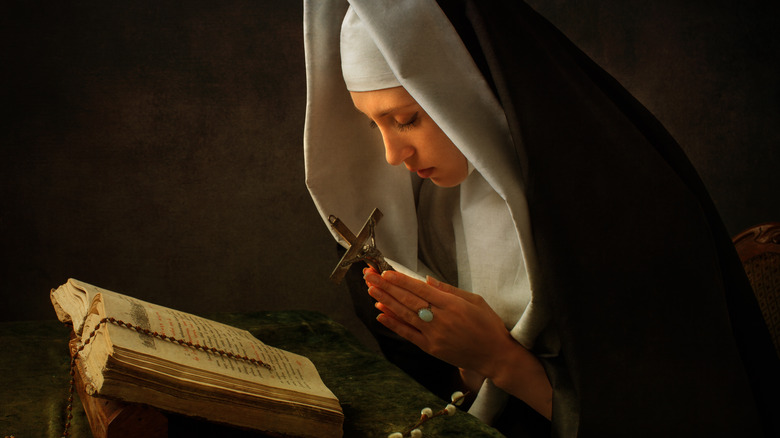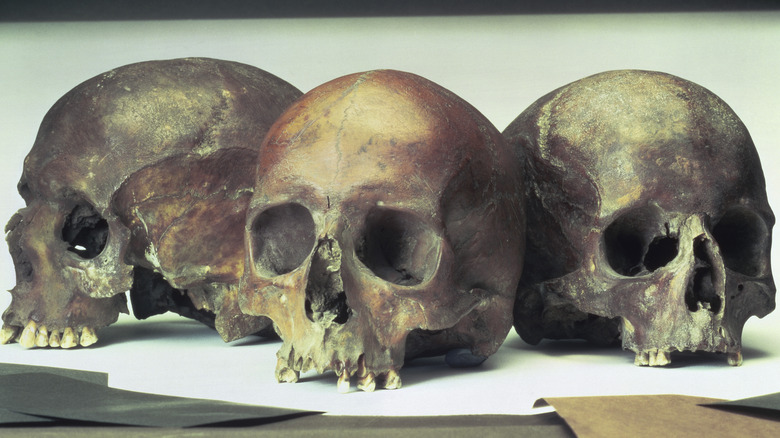The Truth About The Medieval Nun With Blue Teeth
Nuns are revered and respected religious figures known mostly for their pious natures and their dedication in the service of their faith. During Medieval times their vows of poverty, chastity, and obedience set them apart from society, and many assume that they spent all day praying or looking after the less fortunate, per Medieval Chronicles. While they did do things like pray and tend to the sick, over time it has become evident that they had a few other roles as well. The responsibilities of cooking, cleaning, education, and providing medical care for the community also fell to them. However, recent research shows that these women may have had another job — as artists and writers who worked on the books and manuscripts produced in monasteries during this time.
Decades ago in a medieval cemetery near Dalheim, Germany, a nearly 1,000-year-old skeleton of a nun was discovered. Little did anyone know that this finding would completely change how medieval nuns are viewed. According to Chemistry World, Christina Warinner and Anita Radini initially set out to study the diets of women during this time period. In order to do so, they were going to investigate "dental calculus" found on the teeth of this nun's skeleton. To put it simply, they were going to examine the tartar on this woman's teeth and see what it could tell them. What they found was a complete surprise to the scientific and historical community.
Surprising but incredible discovery
Upon close examination, the researchers discovered something unnatural about this skeleton's teeth. They were blue! Okay, not bright blue or anything (which would have been super obvious, right?), but they found specks of blue dye embedded in the tartar found on her teeth. Upon further investigation, they would find that these blue-colored stains were a substance called ultramarine, according to The Atlantic. Ultramarine was a blue pigment made from lapis lazuli gemstones and it was used for writing or decorating religious manuscripts and books. This substance also was ungodly expensive. It was so costly that it was only used in the production of religious art and texts. This then begs the question as to how this uber-expensive dye ended up on the back of a nun's teeth?
While several theories were investigated, the most logical is actually pretty simple. This nun, whoever she was, probably worked on some of these ancient manuscripts or art and while doing so, she licked the paintbrush. As stated in Listverse, licking a paintbrush was a common habit of painters when they were doing super detailed work. This explanation could also largely dispel the widely held belief that only monks were allowed to work on these holy manuscripts. It's possible that these medieval nuns participated in the creation of some religious texts or artwork and played a larger part in their production than initially believed

